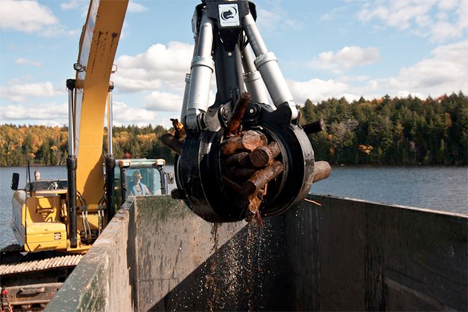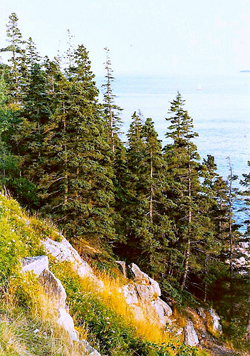A century or more after they sunk to the bottom of Quakish Lake in Millinocket, Maine during transport to a nearby paper mill, submerged logs are brought to the surface and transformed into new products, including Eastern White Pine flooring. Maine Heritage Timber Company discovered a trove of logs estimated at an astonishing 700,000 to 1 million cords stacked in the bottom of the 1,000-acre lake. That’s enough to harvest for around 20 years, according to company co-founder Steve Sanders.
The lake is located along the west branch of the Penobscot River, which was a highway for delivering wood to mills throughout the rich history of Maine’s historic lumber industry. While being transported, some were naturally lost to the water, sunken and long forgotten. While Maine Heritage Timber Company initially reclaimed the old logs for use as pulp in biomass boilers, they’ve discovered a use that preserves the wood’s heritage.
“The waters of the Penobscot River have protected the timber from deterioration and ingrained the wood with an amazing assortment of grays, blues, and reds,” says Sanders. “Cut by hand, this lumber has characteristics found in no other wood.”
The company glues layers of the lake-salvaged wood to a thin layer of Baltic birch to create an engineered flooring product. They’ll harvest about 12,000 tons of the submerged wood this year to create this flooring for lines like Penobscot, made of Eastern White Pine, and the 1899 Collection, made of red oak and yellow birch.
Read more about how the wood is harvested and treated at MaineBiz.





